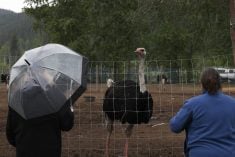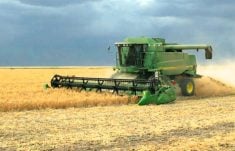Winnipeg, July 19 – The majority of crops in Manitoba have entered the flowering and grain-filling stage, the weekly Manitoba crop report says.
Rain in southwest Manitoba has left many fields with between 10 to 60 millimetres of moisture. Winter wheat and fall rye are beginning to mature albeit with some fusarium head blight. Spring seeded cereal crops are now heading and a few fields have started to turn.
The northwest region saw thunderstorms and scattered rain but most crops continued to advance nicely. Fall rye and winter wheat crops are starting to change colour while in the Roblin region some crops were lodging.
Read Also

Arlene Dickinson says recent trip to Asia opened her eyes to new trade opportunities
Arlene Dickinson says Canada must take up decades-old suggestions to support the agriculture and food sectors
The Eastern region experienced rainfall accumulations in the 20 to 60 millimetre range with high humidity levels. Winter cereals are in the dough stage with straw and heads starting to turn. Some lodging is apparent as a result of the heavy rains and strong winds.
In the Interlake region, spring wheat ranges in development from the milk to soft dough stages in the majority of fields. Late seeded wheat is also flowering. Canola ranges in development from pod stage in the South Interlake, to flowering in areas of the North Interlake.
Disease pressures and insect activity continue to be factors throughout the province, the report said.














